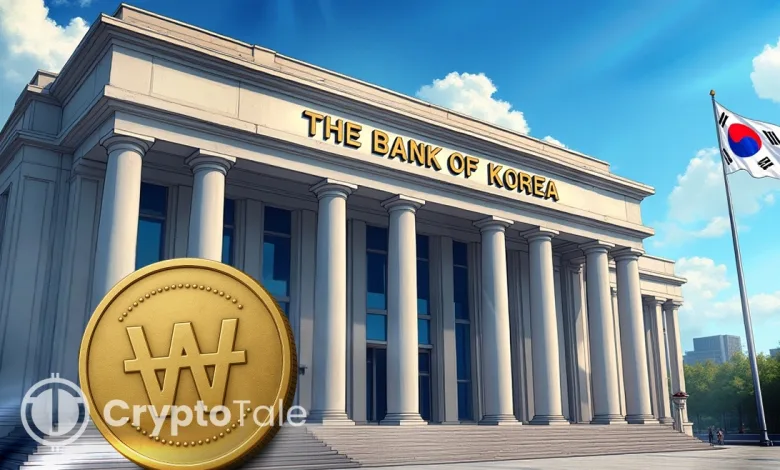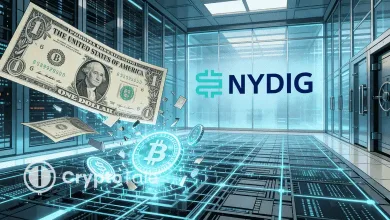Kaia Chair Challenges South Korea’s Bank-First Plan

- Dr. Sangmin Seo says South Korea’s bank-first stablecoin model lacks a logical basis.
- The Bank of Korea insists banks are best suited to issue safe, regulated, stablecoins.
- Seo opposes the proposed ban on stablecoin yields, calling it harmful to innovation.
The Bank of Korea’s proposal for banks to spearhead the rollout of won-backed stablecoins has drawn criticism from Kaia DLT Foundation chair Dr. Sangmin Seo. Speaking on Monday, Seo said the bank-first model “lacks logical foundation” and risks stifling innovation across South Korea’s developing digital asset sector.
Seo Calls for Broader Issuer Rules
According to Seo, the Bank of Korea (BOK) should establish clear, transparent rules for all potential stablecoin issuers rather than restricting issuance to banks. He said such an approach would “minimize monetary risks and foster innovation” while allowing both banks and non-bank institutions to compete on merit.
Seo emphasized that regulatory clarity would also help determine “what qualifications are required for an issuer to be regarded as trustworthy.” The BOK’s recent report argued that banks are better positioned to issue won-pegged stablecoins because they already meet strict capital, foreign exchange, and Anti-Money Laundering requirements.
These safeguards, the report said, could help prevent risks linked to depegging, fraud, and liquidity shortfalls. However, Seo noted that such logic fails to recognize the potential of regulated non-bank participants who could meet equivalent standards under well-defined frameworks.
Central Bank Seeks Control Amid Rising Risk Concerns
The BOK’s stance follows Deputy Governor Ryoo Sangdai’s June proposal that banks should act as primary stablecoin issuers before other sectors gradually enter the market. The central bank’s latest report supported those views, urging coordination between currency, foreign exchange, and financial regulators to oversee issuer eligibility, issuance volumes, and related compliance.
The report warned that private stablecoin issuers might lack institutional trust, comparing potential instability to the 19th-century American free-banking era and Korea’s Dangbaekjeon crisis under King Gojong. It added that “currency operates not on technology, but on trust,” questioning whether blockchain-based systems could ensure long-term stability.
The BOK cited global examples of stablecoin depegging, including the collapse of Terra’s algorithmic coin and USDC’s temporary fall to $0.88 during the Silicon Valley Bank crisis. According to the report, even major fiat-backed stablecoins remain vulnerable to liquidity shocks and confidence erosion.
Related: South Korea’s FIU Reopens Door for Binance’s Comeback: Report
Yield Restrictions Lead to Industry Scrutiny
Alongside its issuer guidance, the BOK proposed a ban on interest-bearing stablecoins, arguing such tokens could directly compete with traditional bank deposits. Instead, it suggested promoting deposit tokens, digital representations of existing bank deposits, as a safer alternative.
Seo opposed the proposed ban, calling it excessive. He said that while stablecoins should not include yield-bearing features by design, restricting secondary yield generation would “limit their utility and adoption.” Seo added that allowing yield creation through legitimate use cases would support market growth without undermining the banking system.
At least eight major South Korean banks, including Shinhan and KB Kookmin, plan to introduce won-pegged stablecoins between late 2025 and early 2026. Their announcements came after the election of President Lee Jae-myung, whose administration has supported several crypto-related initiatives, including legislation to legalize stablecoin issuance.
However, the BOK maintained that its objective is not to suppress innovation but to ensure what it calls “safe and sustainable progress.” The central bank stressed that before evaluating the technical feasibility of won-denominated stablecoins, authorities must first address the question of whether “trust is possible.”
South Korea’s stablecoin debate is on control, trust, and innovation. The Bank of Korea wants banks to lead, citing safety concerns. Meanwhile, Dr. Sangmin Seo calls for clear rules that include both banks and non-banks to ensure fair competition and responsible growth.




